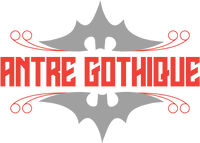
Meaning of Viking Symbols and Tattoos
of reading
The Vikings were soldiers from Scandinavian countries such as Norway, Denmark and Sweden from 700 to 1100 AD (known as the "Viking Age") who were famous for their maritime and navigation skills . Due to the enduring appeal of Viking legends, they are popular materials for films, comics and tattoos.
Today, people of Nordic descent like to have Viking tattoos on their bodies to show their pride. Others like Viking tattoos because they are fascinated by Norse mythology, culture and beliefs.
Modern Viking tattoos don't actually date back to the Viking era, but are mainly inspired by Norse mythology, including mythological objects, animals, symbols and weapons.
Viking tattoos include rune tattoo, Val nut tattoo, Viking compass tattoo, etc.
1- Viking Runes
Runes are the letters of a set of related alphabets called runic alphabets. Before the adoption of the Latin alphabet, these letters were used to write various Germanic languages and then used for special purposes. Runes were used to name things and places 2000 years ago, offer protection, attract luck and wealth, and magically predict the course of future events. Each Viking rune represents different meanings, such as breakthrough, fertility, creation, endurance, autonomy, success, honor, justice, authority, etc. Each of them symbolizes new changes in life and predictions for the nearest future.
Northern European runes were carved on Viking cups, amulets, house lintels, and ship bows.
2- Valknut (Death Knot)
Valknut is also known as Odin's Knot, Hrungnir's Heart, Slain Warrior's Knot, and Val's Heart. Valknut is a symbol made up of three interlocking triangles. It appears on various objects in ancient Germanic archaeological records. The word Valknut is given by modern Norwegians and consists of the word "valr" and the knot "knut" for the slain warrior, meaning "knot of slain warriors". The soldiers killed were Odin's army.
Archaeologically, the Valknut exists mainly on certain Viking stelae and is linked to tombs. It appeared on several Viking Age steles and pictorial memorial stones in Gotland, Sweden, and also on the Osberg Ship Burial graves in Norway, where it was carved on the bed post and appeared on the tapestry.
Valknut seems to be associated with death, as well as Odin and the God of War. Today, the Valknut symbol serves as a reminder of courage and destiny throughout this life and the next.
In the modern sense, the Valknut logo is very popular in jewelry design, interior decoration and tattoos. Because people who wear Valknut believe that with Odin's help, they will be able to overcome the ups and downs of their lives.
3- Yggdrasil
Yggdrasil is also called the world tree or the tree of life. In Norse mythology, Yggdrasil is a strong and immense evergreen ash tree. Its trunk grows in the geographical center of the Scandinavian spiritual cosmos. Its branches and roots connect the nine fields of the universe, thus connecting all parts of the universe together.
Yggdrasil represents the cycle of birth, growth, death and rebirth. It also represents the nature of the universe, the relationship between time and destiny, harmony and nature.
Just like the branches of a tree prosper and grow towards the sky, in our life we will also work hard to gain more knowledge, wisdom and new experiences and become stronger. Therefore, the tree of life also symbolizes our personal development, uniqueness and personal beauty.
4- Vegvisir
Vegvisir, also known as the runic compass or Viking compass, is made up of eight Viking runes and is a symbol of protection and guidance. It is believed that the Vikings used it as a compass. The word Vegvisir means “scout” and “signpost” in Icelandic. It is believed that if you wear this sign, you will never get lost in a storm or bad weather, even if you do not know where to go.
The Viking compass will offer you protection and help you not get lost during storms and bad weather, even if you don't know your destination. This is why many people get it tattooed, so as to never lose the path to justice and prosperity.
5- Bar of wonder
Aegishjalmr, or Bar of Wonder, is the magical symbol of protection and victory in Iceland. This symbol aims to protect fighters in combat, but also to give them the courage and strength to defeat the enemy. This symbol can also be used to give people the perseverance needed to overcome fear. It is also a sign of a dominant position in a conflict. Not only that, but it also represents the ability to cause fear in others and suppress one's inner fear.
Many Viking warriors painted, tattooed, or carved this symbol on their foreheads between their eyes or arms before fighting. They believed that this would protect them or give them the courage to defeat any enemy they might face, and would create fear in the hearts of the enemy.
6- Odin's horns
The Horns of Odin (also called a horn triskelion or three-horned triskele) is a symbol consisting of three interlocking drinking horns. The exact meaning of the symbol is unclear, but it may imply that Odin stole "the mead of poetry". The triskelion is literally three meads in their three horns, called Óðrœrir, Boðn and Són. In Norse Viking mythology, poetry mead is a symbol of wisdom and poetic inspiration. Odin's horns are also known as a symbol of wisdom.
7- Mjölnir
In Norse mythology, Mjolnir (Thor's hammer) is depicted as one of the most terrifying and powerful weapons in existence. Thor was the son of Odin and Fyorgyn (aka Jord), the earth goddess. He is the god of thunder and war, and the protector of humanity. He is one of the most popular characters in Norse mythology. It is believed that wearing the symbol of Thor's hammer can bring protection and strength to its holder.











